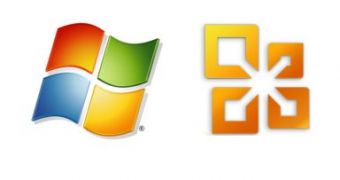Actually, launch deadlines for the next iteration of Windows in 2012, and for the forthcoming major version of Office in 2014, make sense.
With the advent of Windows Vista, various Microsoft executives, including CEO Steve Ballmer promised to never again repeat the gap that separated Windows XP from its successor, and to deliver new Windows releases at a faster pace, once every three years or so.
And while the Redmond company has yet to confirm any details related to Windows 8, the successor of Windows 7, third-party sources are reporting that the operating system will be released by the end of 2012.
It’s all a matter of simple math actually. Windows 7 was released to manufacturing on July 22nd, 2009, less than three years after the RTM of Windows Vista.
Some might still remember that Microsoft released Vista to manufacturing on November 8th, 2006, and in this context, Windows 7 was wrapped up a good three months ahead of the three years that the software giant announced it would take it to build the next iteration of Windows.
In fact, the Redmond company also managed to officially launch Windows 8 worldwide by within three years after finalizing Vista, not to mention releasing it on the market, which happened on January 30th, 2007.
At the same time, Microsoft did not indicate any changes in the development process of Windows, and as such it’s to be expected that Windows 8 will be delivered within three years after Windows 7.
Considering that confirmation of the fact that the Windows 8 project had been kicked off dropped in early 2009, ahead of the RTM of Windows 7, the next major iteration of the Windows client could hit RTM by mid-2012.
There are already voices noting that in order to RTM Windows 8 in mid-2012, and to release it by the end of the same year, Microsoft will need to provide a Beta of the platform in mid-2011.
Back in January 2007, Microsoft launched Windows Vista in tandem with Office 2007, in a move designed to be illustrative of the “Better Together” perspective over the two products which were being marketed as complimentary.
Office 2007, codenamed Office 12, was also declared golden almost simultaneously with Vista, just a few days earlier in fact on November 6th, 2006.
Now, it is obvious that Microsoft took longer to develop Office 2010 than it did Windows 7. Office 2010 was released to manufacturing on April 15th, 2010, almost three years and six months after the RTM of its predecessor.
Office 2010 was also launched on the market at almost three and a half years after office 2007, on June 15th, 2010.
With Windows 7 and Office 2010 not being released in concert, Microsoft could also not tie together Windows 8 and Office 15.
And adding three years and a half after the June 2010 launch of Office 2010, codename Office 14 (Microsoft skipped over Office 13 as a codename), Office 15 could be very well launched officially in early 2014, as recent reports indicate.
In this case, it bound that Microsoft would christen the successor of Office 2010, as Office 2014.
Windows 7 RTM Enterprise 90-Day Evaluation is available for download here.
Office Home and Business 2010 RTM Build 14.0.4760.1000 is available for download here.
Office Home and Student 2010 RTM Build 14.0.4760.1000 is available for download here.
Office Professional 2010 RTM Build 14.0.4760.1000 is available for download here.

 14 DAY TRIAL //
14 DAY TRIAL //